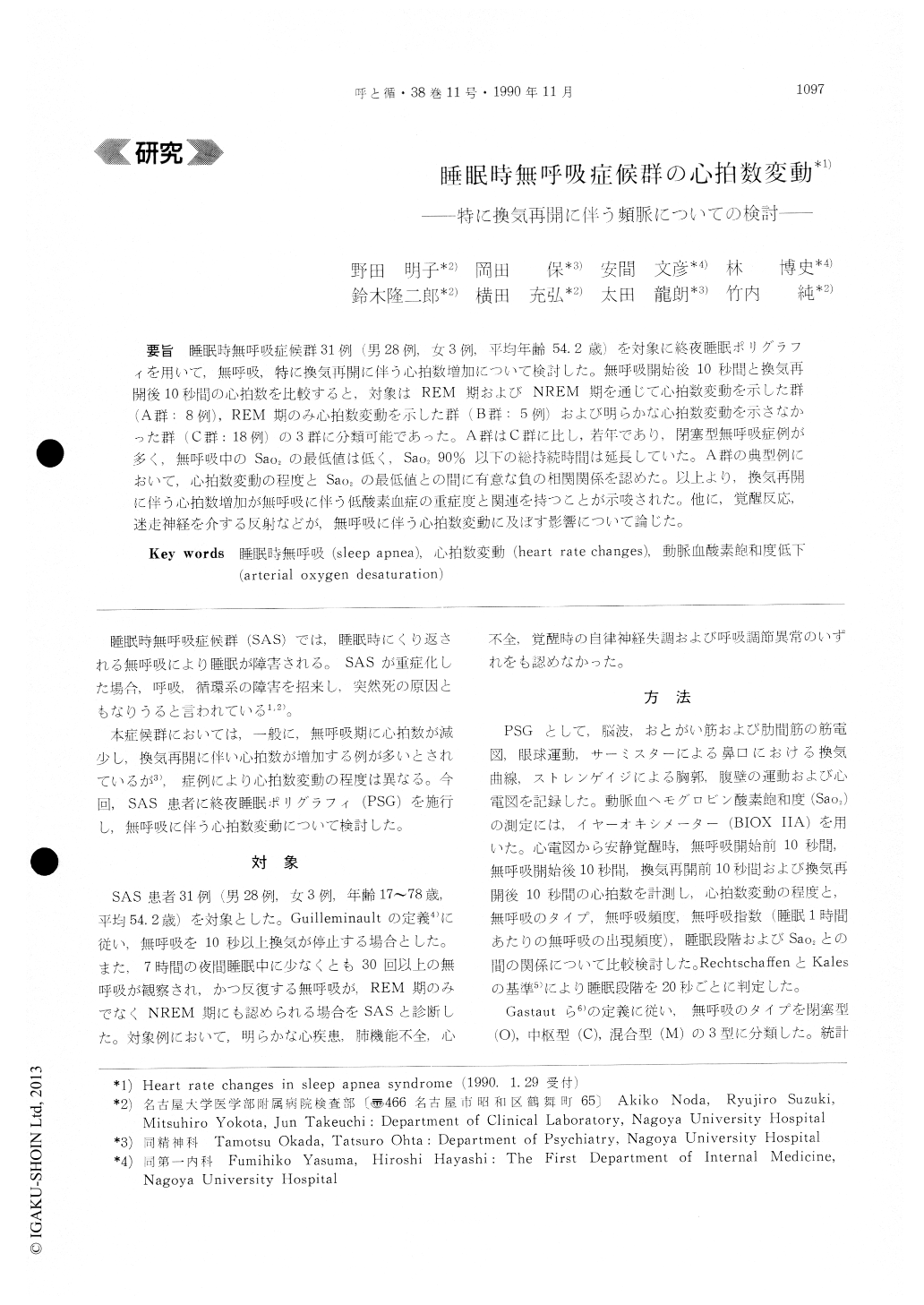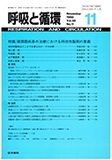Japanese
English
- 有料閲覧
- Abstract 文献概要
- 1ページ目 Look Inside
- サイト内被引用 Cited by
睡眠時無呼吸症候群31例1男28例,女3例,平均年齢54.2歳)を対象に終夜睡眠ポリグラフィを用いて,無呼吸,特に換気再開に伴う心拍数増加について検討した。無呼吸開始後10秒間と換気再開後10秒間の心拍数を比較すると,対象はREM期およびNREM期を通じて心拍数変動を示した群(A群:8例),REM期のみ心拍数変動を示した群(B群:5例)および明らかな心拍数変動を示さなかった群(C群:18例)の3群に分類可能であった。A群はC群に比し,若年であり,閉塞型無呼吸症例が多く,無呼吸中のSaO2の最低値は低く,SaO290%以下の総持続時間は延長していた。A群の典型例において,心拍数変動の程度とSaO2の最低値との間に有意な負の相関関係を認めた。以上より,換気再開に伴う心拍数増加が無呼吸に伴う低酸素血症の重症度と関連を持つことが示唆きれた。他に,覚醒反応,迷走神経を介する反射などが,無呼吸に伴う心拍数変動に及ぼす影響について論じた。
Sleep apnea syndrome (SAS) is often associated with arrhythmias. The study was performed to clarify the characteristics and mechanisms of the heart rate (HR) changes during and after sleep induced apneas. Thirty-one patients with SAS with-out definitive heart disease, aged 17-78 years (mean 54. 2 years), were examined by electoencephalograms, electrocardiograms, electrooculograms, nasal and oral breathing, thoracic and abdominal respiratory move-ments and arterial oxygen saturation (SaO2).
<Results and Discussion> At the onset of sleep apnea, some showed progressive reductions in HR, followed by abrupt tachycardia on the resumption of breathing. Thirty-one patients with SAS were classified into three Groups (A, B, C). Group Ademonstrated that HR changes occurred associated with apnea both in stage REM and in stage non-REM. Group B demonstrated that HR changes occurred associated with apnea only in stage REM. Group C demonstrated that HR changes did not occur associated with apnea. In Group A, apnea frequency and apnea index were higher than those of Group C. In Group A, the lowest SaO2, was lower than that of Group C, total time under 90% of arterial oxygen saturation (SaO2) was longer than that of Group C. There was a good negative correlation between oxygen saturation and HR changes.
Further, HR changes were augmented by arousal response. This might be related to the arousal response as well as to the cardiostimulatory effects of hypoxia associated with increased ventilation. The arousability in response to apneas might be important in HR changes.
In SAS, the degree of HR changes was related to apnea frequency, apnea index, apnea length and sleep stage. We suggest that both oxygen desatu-ration and arousal response may be important stimuli rhat contribute to HR changes associated with apnea. These observations indicated that HR changes might provide useful information on the pathophy-siology SAS.

Copyright © 1990, Igaku-Shoin Ltd. All rights reserved.


